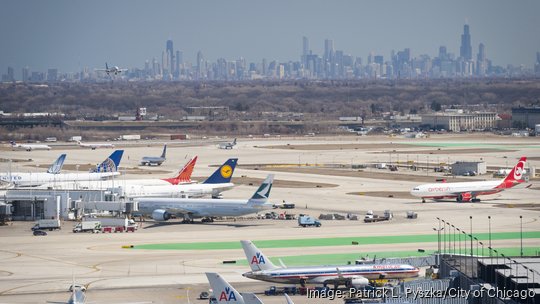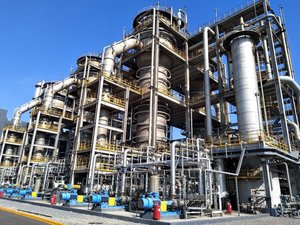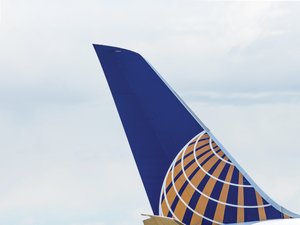
The Midwest is the best place for innovation to happen in the aviation industry.
That was one argument made during Climate Tech Week this week, which included panels on a wide range of topics including biotech, energy, policy and workforce development.
Anthony Gregory, COO of Southwest Airlines Renewable Ventures — a recently launched subsidiary that looks for new opportunities to obtain scalable sustainable aviation fuel — said Chicago, Illinois and the Midwest have the pieces to be a leader in decarbonizing the airline industry moving forward.
"You're well located, with feedstocks nearby, you can locate fuel production nearby, and have the infrastructure to move the product," he said during an SAF panel at the event.
Illinois also has a very active ethanol production sector, said Bill Bodine, director of business and regulatory affairs at the Illinois Farm Bureau. As the No. 2 producer of corn in the country, the state is a good source for the number of different feedstocks it will take to supply a fuel market as large as aviation fuel.
Southwest invested $30 million in Chicago climate-tech startup LanzaJet earlier this year following the opening of the world's first alcohol-to-jet sustainable aviation fuel production plant in Georgia.
“We think LanzaJet has an incredible opportunity to scale as part of our investment,” Gregory said.
LanzaJet converts ethanol into SAF and renewable diesel and its recently opened plant in Georgia produces 10 million gallons a year, 9 million of which are sustainable aviation fuel and 1 million of which are renewable diesel, said Meg Whitty, vice president of corporate affairs and marketing at Lanzajet.
“The 17 billion gallons of ethanol produced in the U.S. per year is still not enough to produce the 25 billion gallons of jet fuel that airlines consume,” Gregory added.
One gallon of SAF requires 1.7 gallons of ethanol, so 25 billion gallons of SAF would require 42.5 billion gallons of ethanol.
Meanwhile, SAF production volume reached 158 million gallons globally in 2023, according to the International Air Transport Association.
For its part, Southwest aims to replace 10% of its total jet fuel consumption with SAF by 2030, with the goal of being net zero by 2050.
Though the space is gaining steam quickly — LanzaJet was recently named one of Time’s 100 most influential companies, and California-based carbon transformation startup Twelve announced $645 million in funding this week — Gregory admits there is still a “very small chance” you’ve been on a flight using SAF.
Still, both LanzaJet and Southwest are trying to change that moving forward. More than 800,000 commercial flights have been flown with SAF, according to Whitty.
Sign up for the Business Journal’s free daily newsletter to receive the latest business news impacting Chicago.






